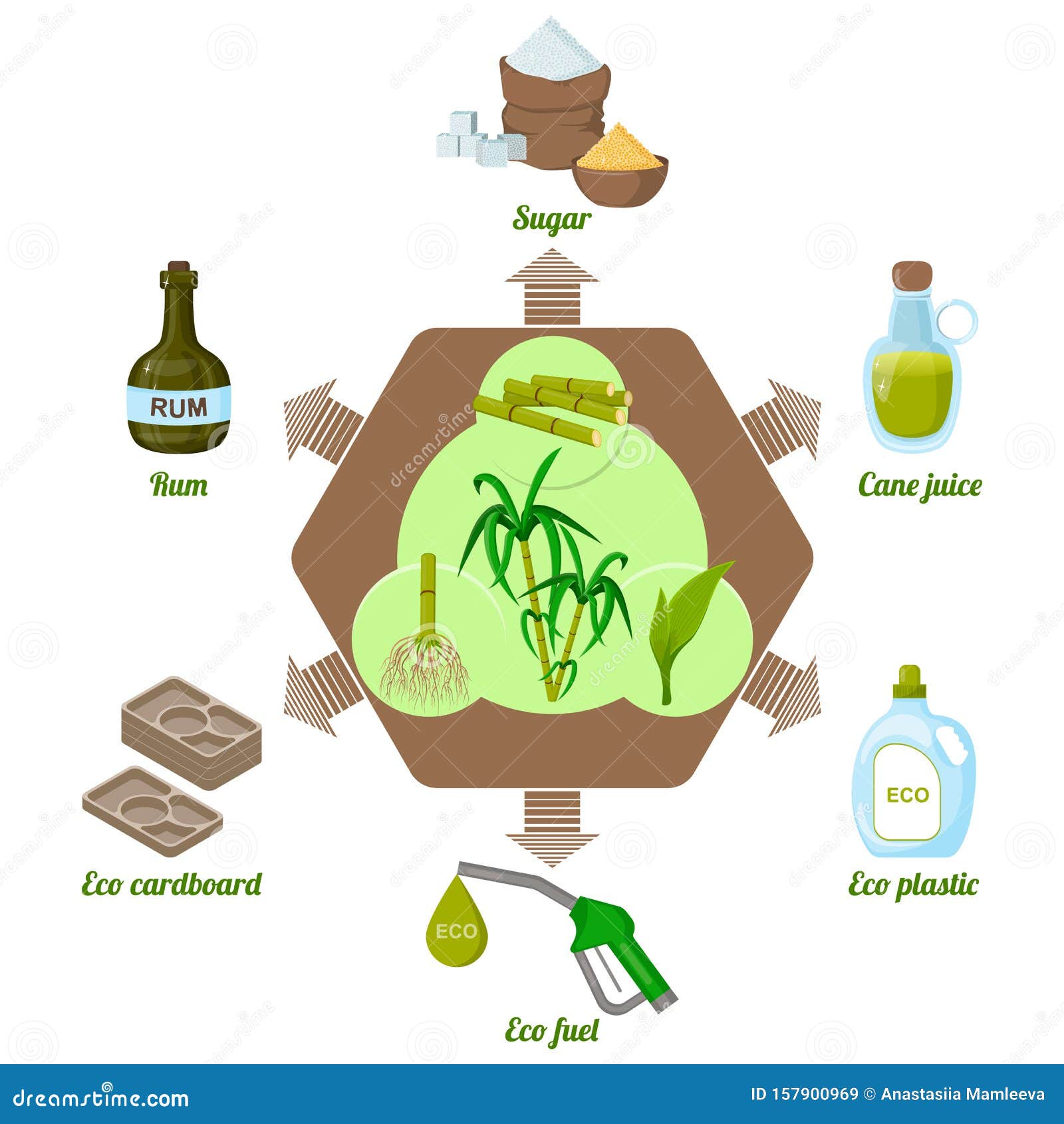Why Are sugar cane products Highly Adaptable?
Why Are sugar cane products Highly Adaptable?
Blog Article
A Deep Dive Into Sugar Cane: Insights on Production, Material, and Product Advancement
Sugar cane plays an essential duty in agriculture, underpinning economic situations in tropical areas. Its farming involves elaborate processes affected by various environmental variables. However, farmers face substantial difficulties, including environment modification and market changes. Advancements in product development are arising in action to advancing customer needs. Recognizing these dynamics is essential for realizing the future of this important plant and its effect on international markets. What exists in advance for sugar cane and its myriad applications?
The Significance of Sugar Cane in Global Agriculture
Sugar cane works as an essential crop in international farming, underpinning economic situations and food systems in many tropical regions. This flexible plant is primarily grown for its high sucrose content, which is refined right into sugar, an essential ingredient in countless food. Beyond sweetening, sugar cane is also crucial for producing biofuels, specifically ethanol, adding to power sustainability.The economic value of sugar cane encompasses employment, offering incomes for numerous farmers and workers in handling centers. In a number of countries, sugar cane farming and handling stand for considerable portions of farming GDP, affecting trade balances and local development.Additionally, sugar cane's versatility to different climates enhances its importance as a crop, making sure consistent supply in global markets. Its spin-offs, consisting of molasses and bagasse, additionally expand its energy, making it a crucial component in food, energy, and sector. On the whole, sugar cane stays a keystone of farming efficiency worldwide.
Cultivation Processes: From Planting to Harvest
Growing sugar cane involves a series of well-defined procedures that assure ideal development and yield. The growing starts with land preparation, where the dirt is tilled to safeguard optimal oygenation and water drainage. Following this, seed cane, which contains fully grown stalks, is picked and cut into sections (sugar cane products). These sections are then planted in furrows, making sure proper spacing to permit sunlight and nutrient access.Once planted, irrigation systems are employed to maintain adequate wetness degrees, as sugar cane flourishes in damp conditions. Weeding and pest management are vital during the growing duration to decrease competition for resources. Nutrient application, consisting of plant foods, supports durable development. As the plants mature, monitoring for illness and bugs continues.Harvesting generally takes place 10 to 24 months post-planting, depending on the variety. The walking sticks are reduced short, ensuring marginal waste, and are promptly transferred for processing to protect sugar top quality
Geographical Distribution of Sugar Cane Production
The geographic circulation of sugar cane production is largely formed by specific climate and dirt demands. Major producing countries, such as Brazil, India, and China, take advantage of exotic and subtropical environments that sustain the plant's growth. Understanding these factors provides insight into the international landscape of sugar cane cultivation.
Significant Producing Countries
Although sugar cane is expanded in different areas worldwide, specific nations control production because of beneficial climates and agricultural practices. Brazil leads the worldwide market, accounting for around one-third of total production, thanks to its comprehensive haciendas and advanced farming methods. India follows as a considerable producer, gaining from both beneficial climate condition and a big domestic market. China and Thailand additionally rank amongst the leading producers, with well-established frameworks supporting their sugar industries. Various other remarkable contributors consist of the USA, Mexico, and Australia, each leveraging their distinct agricultural systems to enhance result. These countries play a necessary function in the sugar cane supply chain, influencing international rates and accessibility
Climate and Dirt Demands
Suitable climate and dirt conditions are vital for successful sugar cane production. Sugar cane prospers in exotic and subtropical regions, calling for cozy temperatures between 20 ° C and 30 ° C (68 ° F to 86 ° F) These plants need plentiful sunlight and rainfall, ideally in between 1,500 to 2,500 millimeters each year, to guarantee peak growth. The dirt must be well-drained, productive, and rich in organic matter, with a pH level ideally between 5.5 and 8.5. Sandy loam or clay loam soils are especially for sugar cane farming, offering required nutrients and drain. Geographic circulation is mostly affected by these factors, with significant production areas situated in Brazil, India, and China, where environmental conditions straighten with the plant's requirements for growth and return.

Challenges Encountered by Sugar Cane Growers
Sugar cane cultivators come across considerable challenges that influence their source of incomes. Climate modification introduces uncertain climate patterns, impacting plant return and top quality. In addition, market value volatility creates financial uncertainty, complicating lasting planning for these agricultural manufacturers.
Environment Adjustment Impacts

Just how do climate adjustment influences impact the feasibility of sugar cane growing? Rising temperature levels and erratic weather condition patterns significantly test sugar cane cultivators. Boosted warm can bring about reduced yields, as the plants battle to thrive in extreme problems. Additionally, modified rains patterns result in either dry spells or too much flooding, both detrimental to plant health and wellness. article Bugs and conditions are likely to proliferate in warmer climates, even more harmful production. Soil destruction and salinization due to rising sea degrees can decrease arable land. These weather changes compel cultivators to adjust their techniques, commonly requiring financial investment in new modern technologies and resistant plant ranges. Inevitably, the sustainability of sugar cane growing rests on resolving these environment tests successfully.

Market Rate Volatility
Market value volatility provides substantial obstacles for sugar cane growers, influencing their economic security and preparation. Fluctuations in market value, driven by elements such as worldwide supply and need, weather conditions, and government policies, create uncertainty for producers. This unpredictability makes it tough for farmers to anticipate earnings and take care of operating expenditures effectively. Furthermore, when costs drop suddenly, numerous farmers may have a hard time to cover production expenses, bring about prospective economic distress. To minimize these risks, some growers turn to contracts or hedging techniques, yet these options might not be available to all. Market price volatility stays a persistent worry, affecting the general sustainability and success of sugar cane farming.
Understanding the Sugar Cane Supply Chain

Market Patterns Affecting Sugar Cane Rates
The dynamics of sugar cane prices are influenced by a variety of market patterns that mirror wider weblink financial problems and consumer habits. International need for sugar and sugar-related products plays a crucial duty, with increasing interest in natural and sustainably sourced items driving costs higher. Furthermore, changes in oil prices affect the cost of production and transportation, more affecting market rates. Weather patterns are another considerable variable; negative conditions can bring about reduced yields and raised prices. Profession policies, tolls, and international contracts likewise shape the market landscape, influencing supply chains and schedule. Currency exchange prices can make complex international profession, affecting prices for both merchants and importers. Shifts in consumer choices toward much healthier alternatives might change demand patterns, developing a ripple result on sugar cane pricing. sugar cane products. Therefore, recognizing these interconnected fads is crucial for stakeholders in the sugar industry
Advancements in Sugar Cane Product Advancement
Countless innovations in sugar cane item growth are improving the industry and increasing its applications. Scientists are discovering alternate usages past standard sugar, including biofuels, eco-friendly plastics, and health and wellness supplements. Advancements in chemical processing strategies have actually enhanced the removal of important substances such as antioxidants and vitamins from sugar cane, promoting its use in functional foods.Additionally, the development of genetically changed sugar cane ranges intends to improve return and resistance to insects, while likewise boosting the nutritional profile of the crop. Technologies in fermentation processes have actually led to the production of premium alcohols stemmed from sugar cane, interesting a growing market for craft spirits.Moreover, lasting methods in farming and processing are acquiring traction, with a concentrate on lowering environmental influences. These advancements not only develop new market chances but likewise cultivate a more sustainable strategy to sugar cane production, lining up with worldwide fads towards environment-friendly items.
Often Asked Concerns
What Are the Ecological Influences of Sugar Cane Farming?
The environmental impacts of sugar cane farming consist of deforestation, loss of biodiversity, water pollution from fertilizers and pesticides, dirt deterioration, and greenhouse gas emissions, every one of which considerably contribute to eco-friendly inequalities and environment modification.
Just How Does Sugar Cane Growing Affect Local Economies?
Sugar cane farming significantly influences local economic situations by producing jobs, boosting agricultural fields, and producing revenue for farmers. It can likewise lead to financial reliance and fluctuations based on market demands and environmental conditions.
What Are the Key Vermin and Diseases Affecting Sugar Cane?
The main parasites affecting sugar cane consist of the sugarcane borer and aphids. Illness such as red rot and smut substantially effect yield. Farmers must execute incorporated pest administration approaches to alleviate these dangers successfully.
Exactly How Is Sugar Cane Processed Into Different Products?
Sugar cane handling includes crushing the stalks to draw out juice, adhered to by information, dissipation, and condensation. This procedure yields review raw sugar, molasses, and ethanol, each offering distinct functions in different markets, from food to power.
What Are the Nutritional Aspects of Sugar Cane?
The dietary aspects of sugar cane include crucial vitamins and minerals, especially B vitamins, calcium, and iron. It additionally contains fiber, though mostly made up of sucrose, which offers energy but does not have significant nutrients.
Report this page